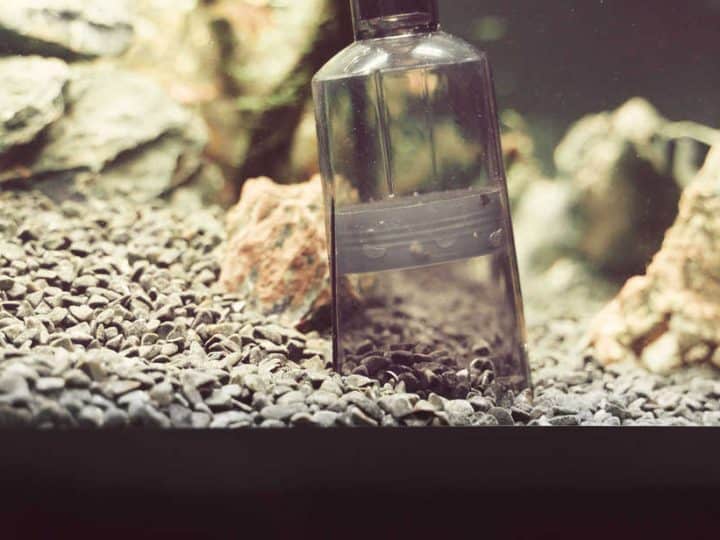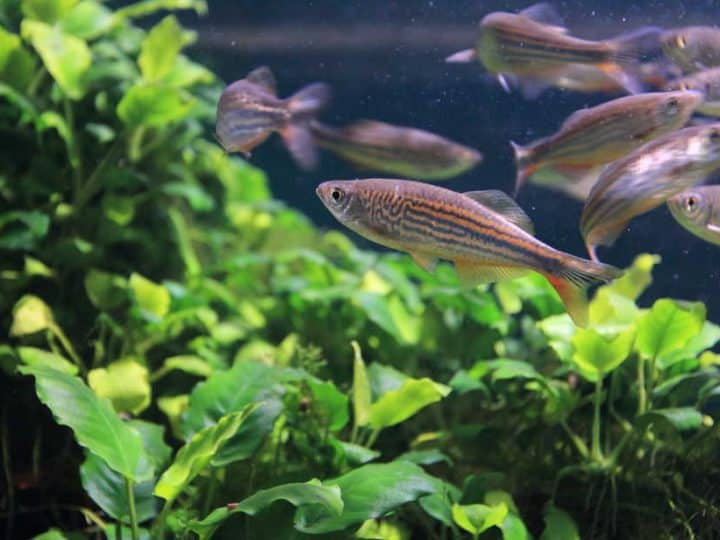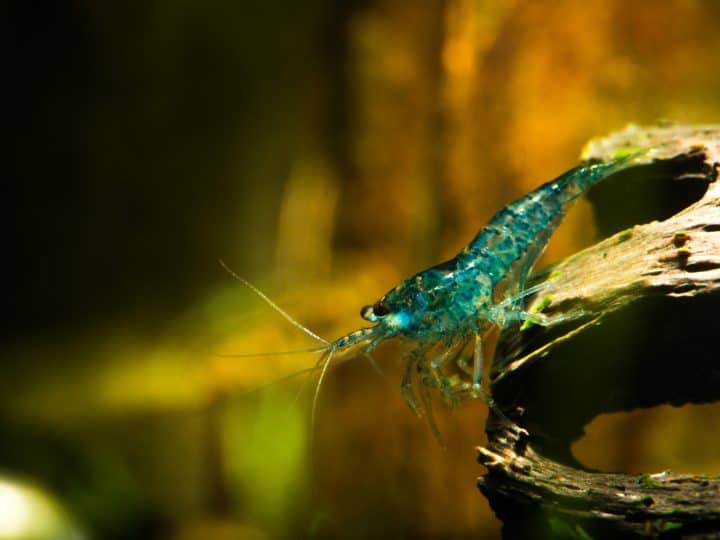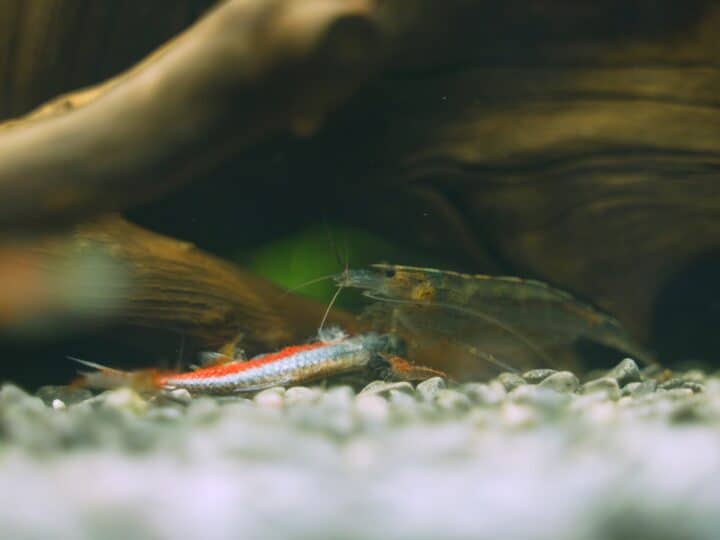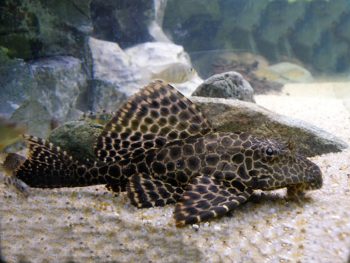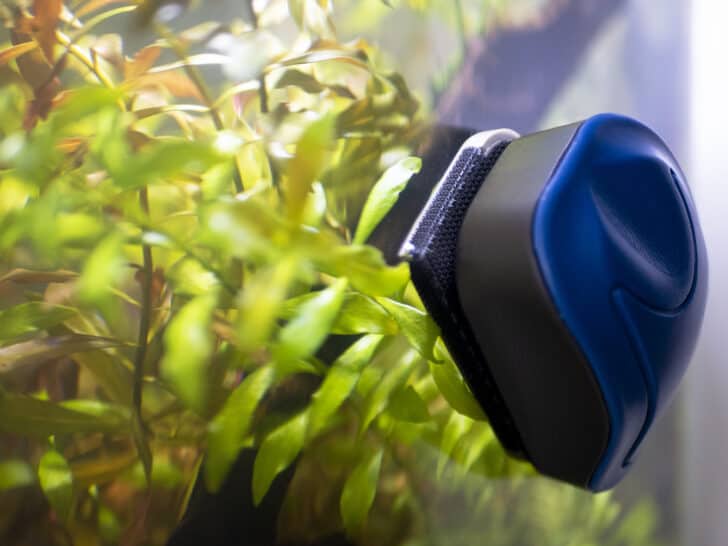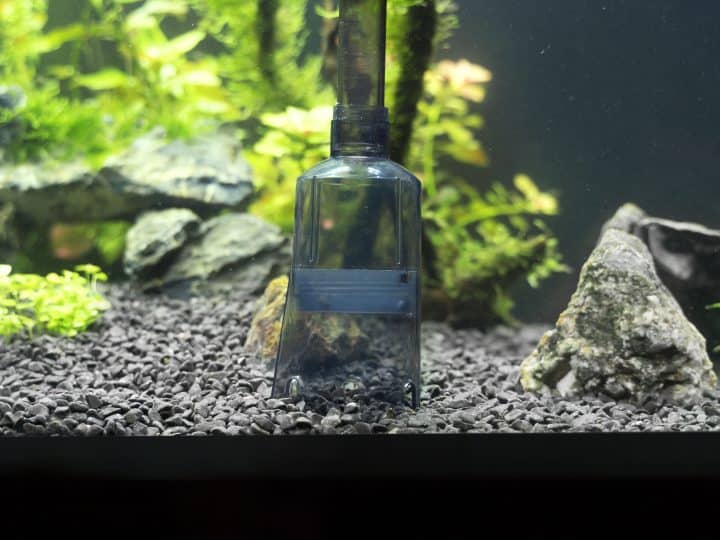I still remember buying my first aquarium from a couple that did not want the tank anymore. I got it for a steal, but it had some nasty stains that needed cleaning. I knew regular cleaning products were toxic to fish, but I was unsure about using vinegar. That’s why I did some research, and here is what I found.
Quick Answer
Vinegar is a great option to clean aquariums. You can clean empty tanks and, when diluted, also use it on tanks that still contain fish. It’s best to use white vinegar over apple cider vinegar or any other vinegar that contains additional flavors.
It’s important to know how to prepare the right vinegar solution, as well as how to prepare your aquarium for fish after a thorough cleaning. I’ll make sure you’re prepared by briefly going over all you must know before grabbing the vinegar bottle.
How to Make Sure Vinegar Does Not Kill Your Fish
If used in the wrong concentration, vinegar can definitely kill your aquatic inhabitants. This is also backed by research. Therefore, it’s important how to learn to use vinegar in a safe way, because that opens up many promising applications of this cheap and common product.
The most important thing that we’re always trying to do is not kill our fish and other tank inhabitants. Pure vinegar might be overkill, definitely for your fish and the smell might also be a lot to handle for you. When cleaning an empty tank, create a solution of 50% vinegar with 50% water. If the 1:1 ratio does not cut it, you can use a 2:1 vinegar-to-water ratio.
When you’re done cleaning the tank, thoroughly rinse everything with water to get rid of all the vinegar. The reason why you should never use soap or other detergents is that it’s impossible to remove all of it from the tank. Also never use sponges or buckets that you’ve previously used with cleaning products.
Be Careful When There Are Fish in the Tank
When you’re using vinegar on a tank that’s still holding fish, it’s possible to tackle some spots or stains on the inside of the aquarium. However, you’ve got to make sure that you use the right solution containing a 1:3 vinegar to water solution. Try to spill as little of the solution into your aquarium, but if a few drops fall in it should not affect your fish too much.
Too much vinegar will affect the pH of your aquarium, and fish can’t deal with fluctuating water parameters. This causes stress, and in this case the use of vinegar can because of threat. Note that a couple of drops in a small tank have a bigger impact compared to a few drops in a larger body of water.
If vinegar enters your aquarium, make sure you keep it below 1ml of vinegar for every gallon of water. A high water flow ensures proper dilution. If you accidentally spill more, quickly perform a water change to manually dilute the vinegar concentration more.
When to Use Vinegar to Clean an Aquarium
Distilled white vinegar is the way to go when trying to get rid of hard water stains. I’ve got an aquarium that’s only filled halfway (it’s keeping turtles). Due to constant evaporation, a lot of dissolved minerals like calcium create a white stain. Whenever you buy an old aquarium, you’ll also have to deal with these.
The hard water stains on your (used) aquarium are similar to the ones you might encounter in your bathroom.
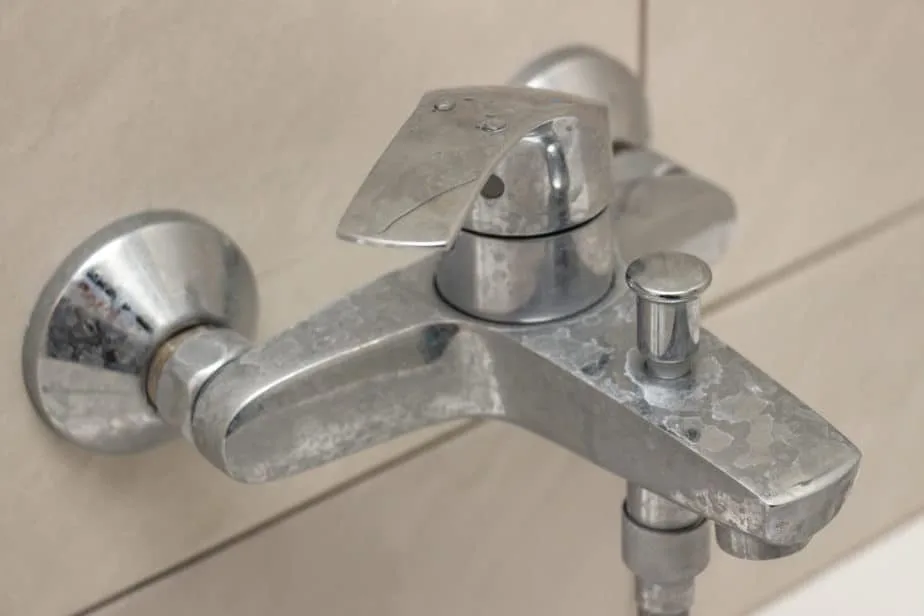
For cleaning an empty tank, besides vinegar, you’re going to want to use lots of salt. The combination of salt and vinegar will allow you to remove all the nasty stains left in the tank. I recommend going overboard with the salt to act as a scrub.
Be careful when cleaning acrylic tanks because they tend to scratch when you look at them funny. It does not take much!
When you’re cleaning aquarium decoration or equipment I also recommend using vinegar. If you’re able to remove them from the tank, you can use the 1:1 ratio and get them super clean. Again, make sure to rinse off as much of the vinegar before putting it back in the tank.
For more resilient hard water stains, you’ll have to completely drain your aquarium in order to lay it on its side. When you do this, you can pour vinegar on it and leave it doing the hard work for 30 minutes. The stains come loose over time and are easier to remove. After doing this, thoroughly rinse everything and put everything back together.
I would recommend against this because temporarily rehousing your fish can cause a lot of stress. Furthermore, the use of a strong vinegar solution can affect the pH to a point where it becomes very stressful for your fish.
Vinegar is also great at neutralizing some of the unpleasant aquarium odors that might be bothering you.
What Vinegar to Use When Cleaning a Tank
Use the most basic vinegar you can get your hands on: white vinegar. White vinegar contains 5% acid and does not have a lot of other substances. Theoretically, you could also use other vinegar like apple cider vinegar, but those vinegars also contain yeast. You want to keep it as basic as possible.
Cleaning vinegar often contains 6% acid, which is only one percent more than white vinegar. However, you should understand that this makes the vinegar 20% more potent than white vinegar. You may need to dilute it with more water in order to get the same concentration.
How to Use Vinegar to Clean Aquarium Plants
If you’ve got plants that are in need of a cleaning, you’ve got the option to use vinegar for this. Regular algae can be partly removed, and vinegar is great at removing any mineral buildup on your plants.
To do this, simply remove your plants and soak them in a strong vinegar solution for 5 minutes. After that, grab an old toothbrush and work your magic on all parts of the plants. This should remove a big part of all the build-up on the plants.
Before putting the plants back into your aquarium, thoroughly rinse them under the tap. I can’t stress this enough, because this plant-cleaning technique is a great way to introduce enough vinegar to lower the pH of your aquarium water.
More delicate live plants can be better off by soaking them in a bleach solution for 5 minutes. This, in combination with a thorough rinse, is a great way to prepare you plants and to remove any hitchhiking pest snails (or snail eggs).
You can also use vinegar to clean plants that you have just bought before you put them in your tank. Make sure to take them out of the little pots they came in though! I have written an interesting article that further explains why this is important, which I highly recommend. You can find it here on my site!
Using Vinegar to Lower pH on Purpose
Theoretically you could use vinegar to lower the pH of your aquarium. This might be something you desire when keeping fish that prefer more acidic water. While this would work, I would recommend to use other techniques that are way more safe.
The best way to lower the pH in your aquarium is to add natural items such as driftwood, peat or catappa leaves. These items gradually (instead of suddenly) lower the pH. By regular measurements you can determine whether you need to add more or less of it.
Vinegar on the other hand will give a sudden and temporary drop in pH that can stress your fish.

